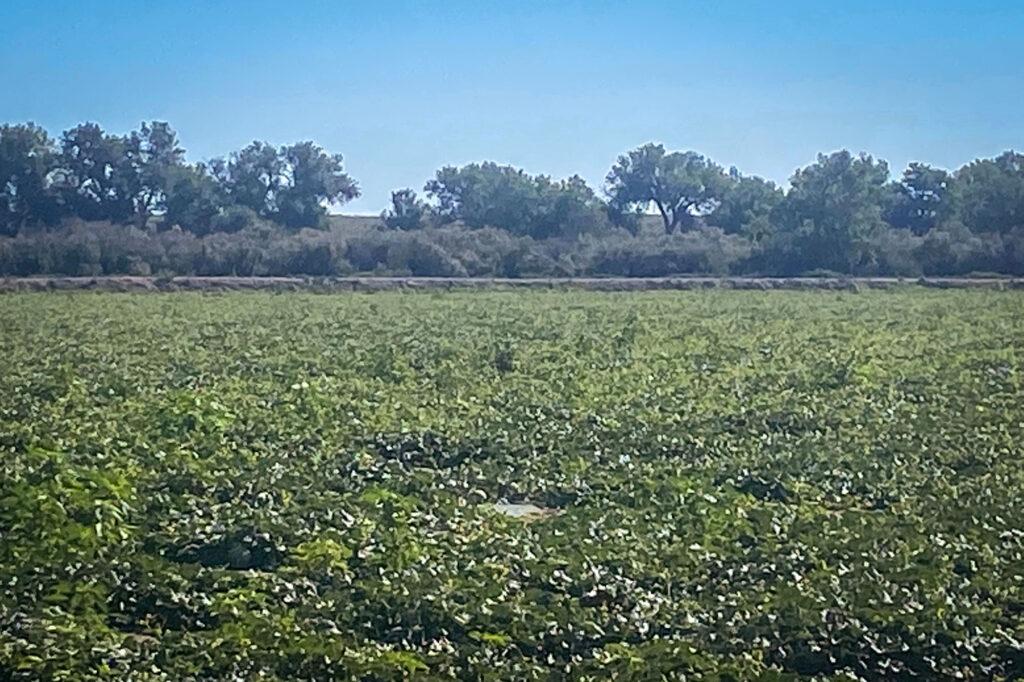As the state’s second extreme drought in three years grips Southeastern Colorado, some farmers are struggling to pay their bills. Parched grazing land means ranchers must buy grain to feed their cattle. With that added expense, many have been forced to sell off their animals at low prices.
Bruce Fickenschure, who oversees the southeast part of Colorado for the Colorado State University Extension, said coronavirus provided a one-two punch for those who depended on outside income.
As side jobs in small towns dried up so did that extra income.
“And now we also have this drought on top of it where producers are having to sell livestock off which is their main source of income,” Fickenschure said. “2020 has been a tough year for anybody down here in agriculture.”
Colorado’s latest drought started May 5. According to Colorado Water Conservancy Board Director Becky Mitchell, there’s a heightened level of concern since “drought affects agriculture, outdoor recreation and tourism.”
“We're also seeing more frequent and severe wildfires that strain our state's emergency response capacity and funding,” she said.
Nearly the entire state, 95 percent, is in some level of drought and close to half of all Coloradans live in the affected areas. Forty of Colorado’s sixty-four counties are in severe to extreme drought. The U.S. Drought Monitor shows that only the northwest area from Greeley to Craig has been spared.

Mitchell said it’s hard to recover from these hot, dry extremes when they occur back-to-back, a weather phenomenon which has been happening for the last twenty years. “With the changing climate, it's clear that significant drought years are becoming more and more frequent. However, this increased drought period is not unexpected.”
On June 22, Gov. Jared Polis activated the drought mitigation and expanse plan which launched a drought task force to find solutions for hard-hit communities like those in Southeastern Colorado. As Mitchell explained, the idea is to link local communities, producers and governments to needed resources, “including financial support to address some of the impacts that are caused by drought and then dreaded, but often necessary water restrictions.”
The drought is so bad in Fickenschure’s region, even the tumbleweeds didn’t grow.
“The majority of our native range has never greened up all summer,” he noted. “It looks like it did in the middle of winter, so you walk across it and you hear the crunch of dry grass, you see dust clouds from your steps. Even when it does rain it’s like pouring water in a clay bowl.”
Still, the dry climate is not a curse to all of Colorado’s crop producers. Fourth-generation cantaloupe farmer Mike Hirakata is looking at a bumper crop thanks to the extreme heat.
“The drought is a silver lining for us,” Hirakata said. “The drier the better for cantaloupe. And it’s cold at night. The big swing in temperature forces the fruit to pull in the sugar. And the altitude at 4,200 feet here is perfect.”

In Rocky Ford, where 600 acres of Hirakata cantaloupe will soon be ready to pick, the rains have come at opportune times for growth. The only threat Hirahita waits and worries about for harvest is hail.
“I’m looking at probably 20 to 30 percent heavy hail damage that happened a month or a month and a half ago. But if we can keep it a little on the drier side and let everybody else upstream, get the rain, we're perfectly happy.”
As for city folks with withering lawns who wonder whether water restrictions will be imposed before summer is over, Mitchell said that decision is up to local water providers.
“It's really important to recognize that providers have described above average water demands in both April and May,” she said. “But at the same time, they reported average reservoir levels. So while we hope not, it’s possible that we may see water restrictions as municipalities plan for recurrent drought years.”









